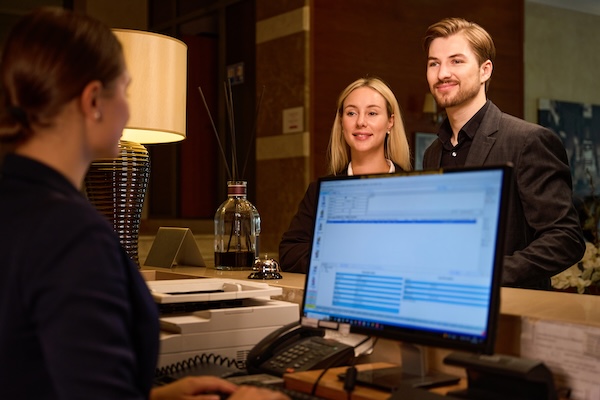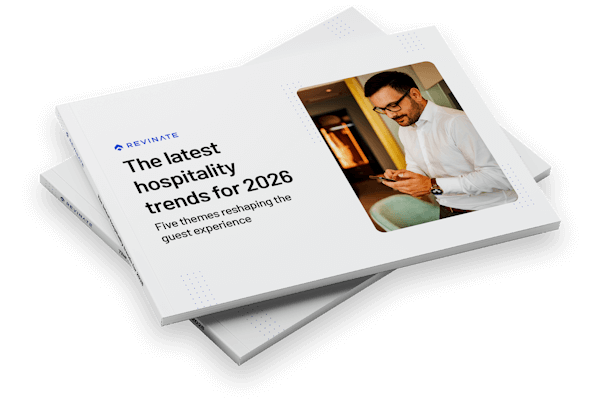Emailing at the right tempo for fewer cart abandonments and more winbacks
Emailing at the right tempo for fewer cart abandonments and more winbacks
Email fatigue is a clear and present problem for practically everyone under the sun who isn’t a monk abstaining from the temptations of the internet. All of us are opted in to blanket, impersonal newsletters that pile up in our inboxes, with this digital noise only further compounded by junk texts, social media direct messages, and telemarketers.
It’s becoming an existential crisis, as our paleolithic salience networks in our brain were never designed for this nauseating level of attention-grabbing bombardment. While the futurist within me would love to pontificate about a quieter future of email minimalism and extended digital detoxes, the reality on the ground is that email fatigue presents a consummate challenge for hotel marketers and driving direct bookings.
This is where true masters like Jonathan Holcomb, Vice President of Commercial Strategy at Storey Hotel Management Group, enter the picture. I had the delight to interview him as part of the Direct Booking Mastery Certification to discuss the work his team has done to build successful email marketing journeys for the seven independent properties in the Bay Area, Chicago, Anguilla, and Fiji that Storey operates.
It’s not you, it’s everyone
First, a caveat: When it comes to cart abandonment and OTA winback tactics, many hoteliers default to email. It makes sense in the microcosm of a single hotel fighting against the mammoths of Booking and Expedia. For all a hotelier knows, OTA bookers are people who may have abandoned the booking process on the brand.com.
The reason for today’s piece is to think in terms of systems. Email in the vacuum of a single property is unrealistic; it has to be considered in the context of all of cyberspace.
Critically here, the current crisis that is email fatigue is not the product of one entity in particular. It’s the result of every company on the planet executing some form of automated outreach strategy.
You may have crafted the most brilliantly templated and worded newsletter. But if it’s the 200th email that a recipient gets that day — in addition to the 200 that this person has received every day over the past few years — then it’s likely going straight to trash or unnoticed and unopened as it’s pushed down the pile by the next batch of incoming messages. Altogether, this is creating a culture of instinctive unsubscribing, “inbox clearing mode,” “email bankruptcy,” or simply letting everything slip down as the total number of emails in the inbox jumps up into the tens of thousands.
Specifically for the hotel industry, this also creates a silent pull towards aggregate platforms like the OTAs — one website to contend with and no one else trying to fit you into their advertising funnel or, worse, selling your information to a data broker for other more nefarious businesses to spam you.
What’s a hotel to do in this situation? How can an independent property or small group win in the email game when the game itself is inherently broken? Holcomb has answers, and he presents a handful of sagacious, actionable advice for nearly every commercial team.
Email microsegmentation
Hotel distribution is all about its segments. But the classical Cerberus of leisure, corporate, and groups is far too broad and contextually nonspecific for today’s pace of bookings. Therein, we’ve derived the term microsegmentation to inscribe what a robust CRM — in this case, Revinate — can do to set up hyper-focused marketing journeys based on detailed and integrated knowledge about who a customer is and how they’ve interacted with your brand.
Holcomb and the team at Storey have built over 50 marketing journeys that start from the CRM based on guest profile data that was received in a structured format and in real time from the PMS (and other systems that interface with the PMS). By being prescriptively specific with how they target customers, their emails become personalized in the true sense of this now-overused word and thus highly relevant to the guest. And with relevancy comes increased open rates and conversions as well as fewer unsubscribes.
A simple example that Holcomb shared was for segmenting leisure transients by their ancillary spend. If a past guest spent a lot in the spa, you wouldn’t want to send them a “What’s New in Dining” newsletter. On the flip side, when your revenue team identifies a monthlong stretch coming up that has slower pace, you wouldn’t want to send a food-centric promotion to a guest that’s categorized as a spa lover.
With the right data flows into the CRM, hoteliers can set up rules and thresholds to design differentiated content that breaks through the digital noise, with Storey showing that this isn’t just theoretical in terms of the direct booking gains that can be realized.
Tempo makes the difference
This degree of data specificity fed into the CRM also allows hotels to set up OTA winback campaigns with tangible results for converting third-party transient guests. As real emails are captured from a variety of mousetraps built into the prearrival and in-stay journeys, OTA customers can then be targeted with precise content designed to get them coming back via the direct channel and therein passing along a few more first-party details to color their profiles for data-driven loyalty decisions. The key, as Holcomb emphasized, is the tempo by which you deliver these messages.
In a world of email fatigue, it helps immensely to deliver relevant content, but it’s equally as important to have relevant timing of delivery.
For instance, an OTA guest who has just departed isn’t going to be in the mindset to consider rebooking, however great your direct booking incentive is. But they may want to learn about what’s coming up in the next year and what perks you have for booking direct — any sort of flexible inducements for them to consider returning in the future. From the point of view of guest context, you can then test your tempo for a promotional follow-up sometime between three to six months after departure.
This concept of contextually timing when newsletters go out according to each microsegment that’s been built also has profound implications for reducing cart abandonment by harnessing the power of next-generation online booking engines (OBEs).
In Storey’s case, they are using an OBE that wins over guests by:
- Having a branded, pleasurable graphical user interface (GUI) that inspires a “sense of discovery” versus the outdated, clunkier product displays
- Allowing for flexible cart additions for the hotel to realize incremental gains in ancillary revenues via this stage of the guest journey
- Has a built-in email capture prompt early in the booking process
It’s this third point that we end on. The email prompt is sent out early versus late — that is, right before or during the checkout screen — within the overall website experience so that it can ingest as many emails as possible for retargeting. From there, it’s all about tempo.
A cart abandonment email campaign may involve the first quick ping, prompting guests to come back 24 to 48 hours later. Second would be three or four days later with a detailed description of the value of booking direct. Third might be one final email a couple weeks after that with a titillating offer to help induce the conversion.
All this is enabled by having an OBE with a great GUI streaming data into the PMS and then into the CRM where it can be parsed out for an effective cart abandonment campaign. Ultimately, with all these different journeys that can be built and a thorough understanding of why tempo matters, your hotel will be set for big wins ahead in driving direct bookings and boosting net revenues per acquisition.
This site is protected by reCAPTCHA and the Google Privacy Policy and Terms of Service apply. View our Terms & Conditions here. *Required fields.






